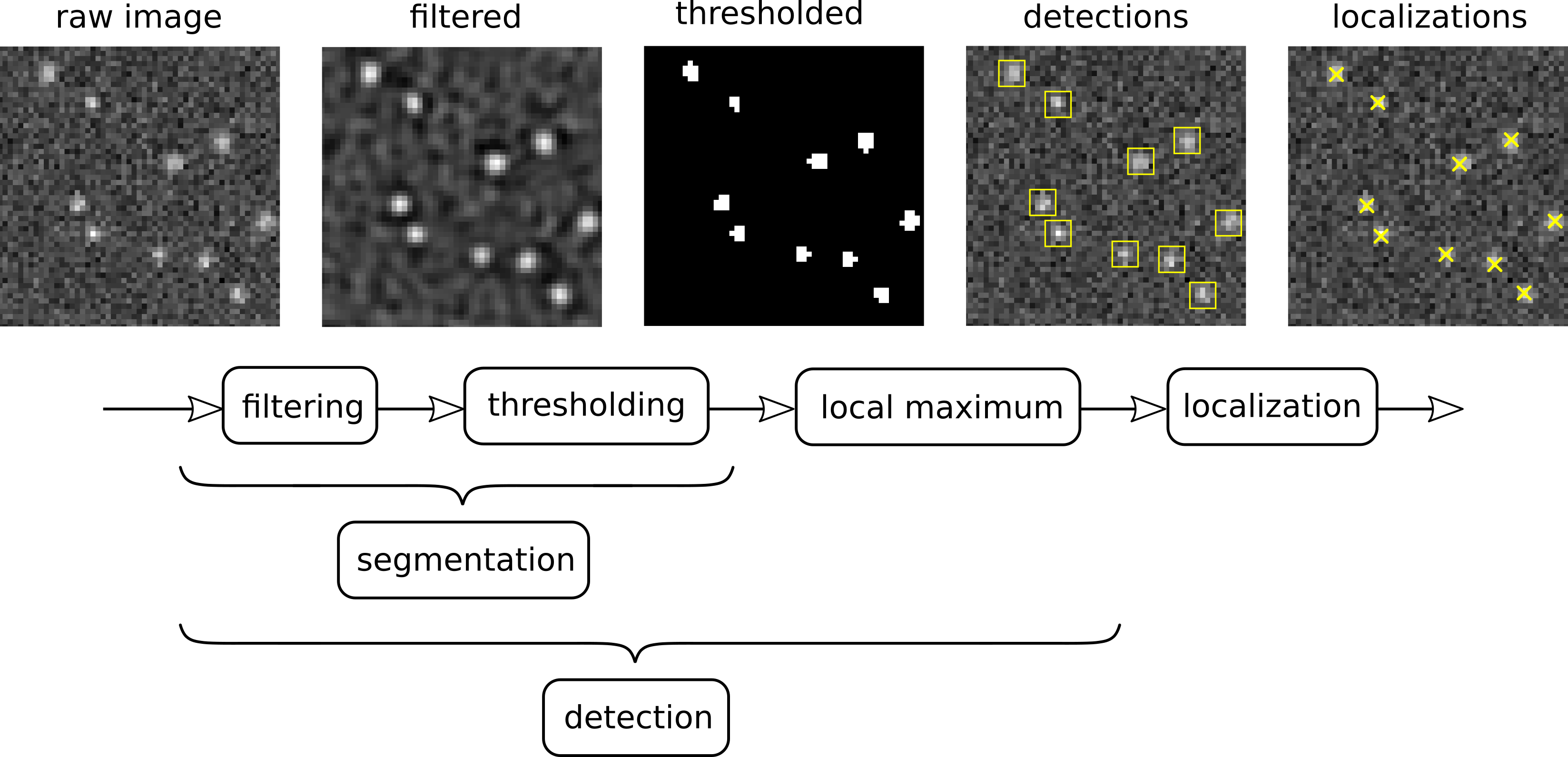Abstract: Single-molecule localization microscopy is a type of computational microscopy that typically achieves a resolution about an order of magnitude better than the diffraction limit by sequentially detecting and localizing non-overlapping fluorescently active molecules. Detection of molecules from raw microscopy data is a classical image processing task often solved by digital filtering, thresholding and local maximum search. In practice, various ad-hoc filters are used, mainly for noise reduction, signal amplification, or removal of non-uniform background. In this paper, we systematically derive a detection filter using signal detection theory based on the knowledge of the noise model that offers the maximum detection probability and derive a thresholding procedure that guarantees a fixed, user-selected false positive probability adapting to the non-uniform background. The derived filter has not yet been presented in the context of localization microscopy, but it serves as a performance benchmark for other methods.
Who: Mirek Hekrdla, Heyrovského institut
When: 10:00 a.m. Friday, January 10
Where: The session will occur physically at the Institute of Information Theory and Automation (UTIA) in room 45 (café). For directions to the institute, please refer to the following link: https://zoi.utia.cas.cz/index.php/contact
Language: Czech (if you require English, please let us know in advance)
Zoom: https://cesnet.zoom.us/j/95065281700




